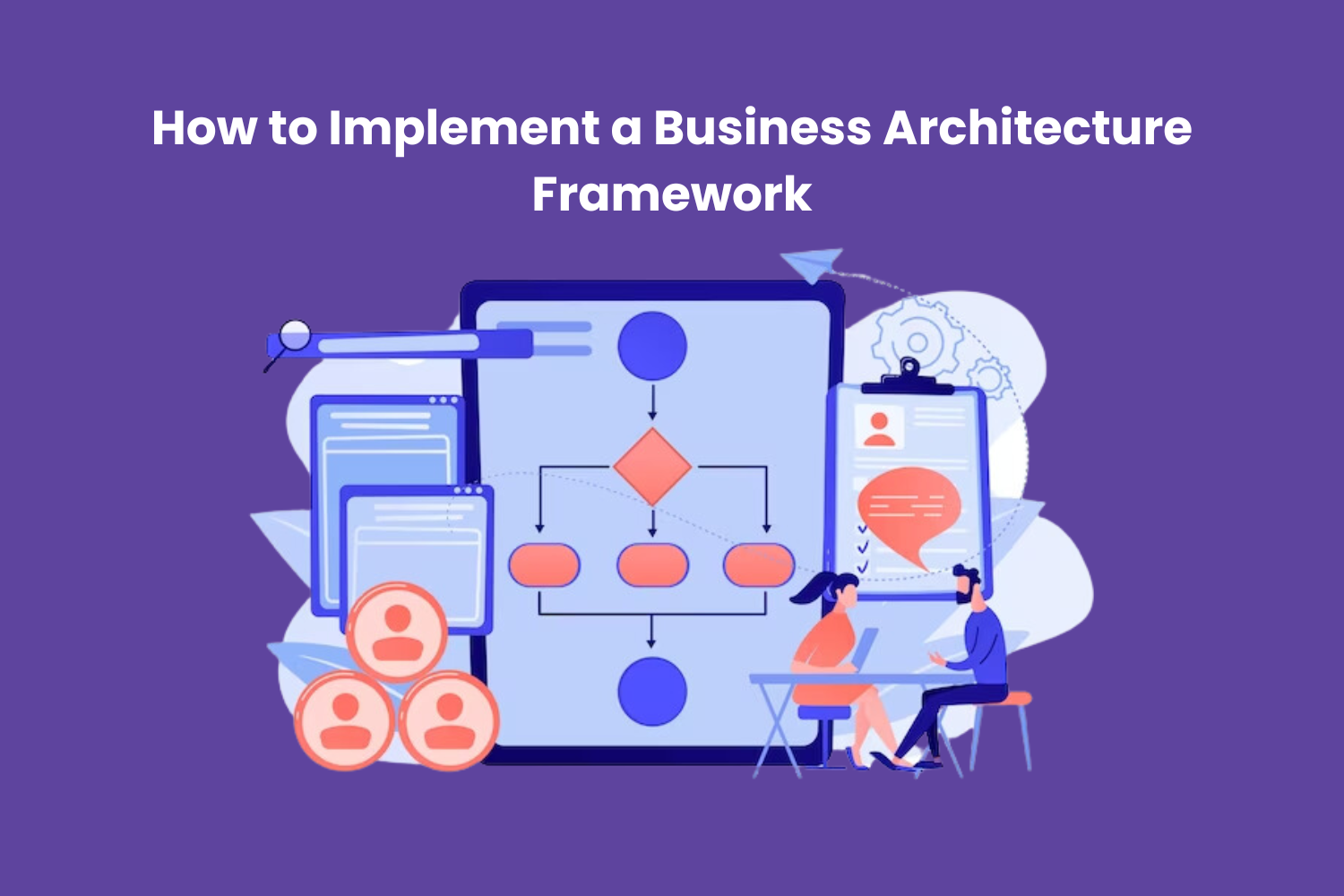How to Implement a Business Architecture Framework

Long-term company success depends on being flexible and competitive. A solid business architecture foundation is crucial in this situation. Your organization’s activities may be mapped out by a well-defined architecture, which makes it easier for it to meet its strategic objectives. To create a successful business architecture framework, TOGAF Training and TOGAF Business Architecture are two crucial components.
In this blog, we will examine the vital procedures and tactics for putting into practice a business architectural framework, highlighting the significance of TOGAF business architecture and TOGAF training.
Table of Contents
- What is TOGAF Training & TOGAF Business Architecture?
- Implementing a Robust Business Architecture Framework: A Step-by-Step Guide
- Defining Your Business Objectives
- Assembling the Right Team
- Identifying Key Stakeholders
- Assessing Your Current State
- Designing Your Target State Architecture
- Gap Analysis and Roadmap Development
- Implementation and Monitoring
- Continuous Improvement
- Conclusion
What is TOGAF Training & TOGAF Business Architecture?
TOGAF Training: Making sure your staff is knowledgeable about The Open Group Architecture Framework (TOGAF) is crucial. The TOGAF framework is a well-known tool for increasing corporate productivity via architectural development. An efficient business architecture implementation requires a skilled staff.
TOGAF Business Architecture: This describes how TOGAF concepts are specifically applied to the field of business architecture. It involves developing a systematic, comprehensive vision of your business, coordinating it with your strategic goals, and streamlining processes to maximize efficiency.
Implementing a Robust Business Architecture Framework: A Step-by-Step Guide
Adopting a structured approach is crucial for successfully adopting a business architecture framework. This section discusses the essential tactics and steps necessary for achievement while highlighting the significance of TOGAF Business Architecture and TOGAF Training.
The eight key factors are listed below:
Defining Your Business Objectives
It’s critical to have a firm grasp of your company objectives before going into the specifics of your architecture. Define your goals and make sure they complement your architectural framework. This stage lays the groundwork for the whole procedure, and it is here where TOGAF Training may significantly impact the outcome. These goals may be defined more precisely and with more TOGAF compatibility by a well-trained team.
Assembling the Right Team
A multidisciplinary approach is necessary for the implementation of a business architecture framework. Create a team of specialists from various fields inside your company. Here, TOGAF training is essential since it gives your team the skills they need to collaborate effectively and guarantee that your architecture adheres to industry best practices.
Identifying Key Stakeholders
For the execution of the business architecture to be effective, the main stakeholders must be identified. This involves external partners and customers in addition to internal teams. The TOGAF company architecture principles guide you as you map out these stakeholders and comprehend their impact on your company operations.
Assessing Your Current State
Understanding your present business processes and IT systems is essential to successfully establishing a business architecture framework. A thorough analysis, often known as a “current state assessment,” can assist in finding areas that need reform or improvement. Your team may benefit from TOGAF training to carry out this evaluation successfully.
Designing Your Target State Architecture
The following phase is to build your goal state architecture after you have a firm grasp of your existing state. Here, the TOGAF principles come into play, offering a systematic way to develop a future state that is in line with your corporate goals.
Gap Analysis and Roadmap Development
To find the differences between your current and desired state designs, do a gap analysis. Make a road map outlining how you intend to close these gaps. The relevance of this stage in facilitating seamless transitions and effective change management is emphasized by TOGAF Business Architecture.
Implementation and Monitoring
Now that you have a clear architecture in place, it’s time to carry out your strategy. Keep an eye on the situation and make the required modifications to keep your business architectural framework in line with your goals.
Continuous Improvement
The concepts of TOGAF Business Architecture and TOGAF Training support the idea of continuous improvement. Review and improve your company design often to keep up with developing technology and shifting market conditions.
Conclusion
Your corporation must implement a business architectural framework to be in line with its strategic objectives. The TOGAF Business Architecture and TOGAF Training are essential for ensuring that your framework is practical and flexible enough to adapt to the changing business environment. Create a robust company architecture that promotes success and development by following these steps and using TOGAF concepts. Considering specialized Business Improvement Courses alongside these methodologies can further enhance organizational capabilities, ensuring businesses are equipped not just to survive, but thrive, in dynamic and challenging environments.





